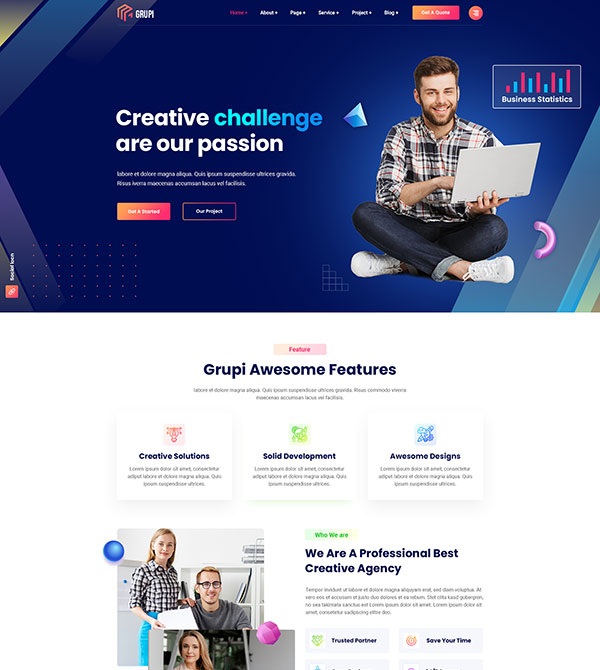Implementing effective micro-influencer campaigns tailored for niche audiences requires a nuanced, data-driven approach that extends beyond basic influencer identification. This guide provides a comprehensive, step-by-step methodology to select authentic influencers, craft hyper-targeted content strategies, optimize outreach, and establish robust measurement frameworks—empowering brands to foster genuine, scalable relationships within specialized communities.
Table of Contents
- 1. Selecting the Right Micro-Influencers for Niche Audiences
- 2. Crafting Tailored Content Strategies for Micro-Influencers
- 3. Optimizing Outreach and Collaboration Processes
- 4. Implementing Tracking and Measurement for Niche Campaigns
- 5. Ensuring Authenticity and Long-Term Relationships
- 6. Handling Challenges and Common Mistakes
- 7. Final Best Practices and Broader Context
1. Selecting the Right Micro-Influencers for Niche Audiences
a) How to Identify Authenticity and Engagement Levels in Micro-Influencers
Authenticity and genuine engagement are the cornerstones of successful niche campaigns. To accurately assess these, implement a multi-faceted evaluation process:
- Manual Profile Review: Examine the influencer’s recent posts for consistency, tone, and real-life relevance. Look for signs of genuine passion—detailed captions, personal anecdotes, and community interaction.
- Engagement Rate Calculation: Use the formula: Engagement Rate = (Likes + Comments) / Follower Count × 100%. Prioritize influencers with engagement rates above 3-5% in niche markets, indicating active and interested followers.
- Comment and Follower Authenticity: Use tools like
HypeAuditororInfluence.coto detect fake followers or spam comments. Authentic influencers typically have meaningful interactions and consistent comment quality. - Content Relevance and Voice: Assess whether their content aligns with your niche’s values and whether their voice resonates authentically with their audience.
b) Step-by-Step Criteria for Matching Influencers to Niche Audience Segments
Matching requires a precise, data-informed process:
- Define Your Niche Audience Segments: Use demographic data (age, gender, location), psychographics (interests, values), and behavioral traits.
- Identify Influencer Content Themes: Map influencers’ content topics to your audience segments. For example, a micro-influencer posting about sustainable fashion appeals to eco-conscious consumers.
- Assess Follower Overlap and Audience Match: Employ tools like
SparkToroorFollowerwonkto analyze influencer followers’ interests, ensuring alignment with your target segments. - Check Audience Engagement Metrics: Ensure their followers actively comment and engage rather than passively follow.
- Verify Audience Authenticity: Cross-reference influencer followers with your target demographics via surveys or targeted social listening.
c) Practical Example: Building a Shortlist Using Social Listening and Data Tools
Suppose you’re launching a vegan skincare line targeting eco-conscious women aged 25-40. You can:
- Use
BrandwatchorTalkwalkerto monitor conversations around vegan skincare, noting influential voices. - Identify micro-influencers actively engaging in these conversations, especially those with 10k-50k followers and high engagement.
- Analyze their recent posts for authenticity and audience relevance, filtering out those with spammy followers.
- Compile a shortlist of 10-15 influencers who demonstrate genuine passion, high engagement, and alignment with your niche.
2. Crafting Tailored Content Strategies for Micro-Influencers
a) How to Develop Content Guidelines that Resonate with Niche Communities
Avoid generic briefs. Instead, craft detailed, audience-specific content guidelines:
- Define Key Messages: Clearly articulate the core value propositions tailored for the niche’s language and interests.
- Set Content Tone and Style: For example, a community centered on eco-living prefers authentic, educational, and personable tones over promotional jargon.
- Provide Visual and Brand Identity Parameters: Share style guides, color palettes, and preferred formats, but allow influencer creative freedom to ensure authenticity.
- Outline Disallowed Content: Clarify what is off-limits to prevent misalignment, such as avoiding certain claims or sensitive topics.
Key insight: The more specific your guidelines, the better the influencer can craft content that feels natural to their audience while aligning with your brand.
b) Techniques for Co-Creating Content that Aligns with Influencer Voice and Audience Preferences
Effective co-creation involves:
- Brainstorming Sessions: Collaborate via video calls to align on campaign themes, formats, and storytelling angles.
- Content Templates with Flexibility: Provide skeleton frameworks (e.g., key points, hashtags) but let influencers adapt wording for authenticity.
- Trial Content and Feedback Loops: Review initial drafts, suggest refinements, and encourage influencer input to enhance resonance.
- Encourage Niche-Appropriate Formats: Stories, reels, or blog posts that suit community preferences enhance engagement.
Pro tip: Use collaborative tools like Google Docs or Trello to streamline content planning and revisions in real-time.
c) Case Study: Designing a Campaign with User-Generated Content and Niche Influencers
A craft beer brand aiming to engage home brewers collaborated with micro-influencers passionate about DIY brewing. They:
- Developed a branded hashtag and encouraged influencers to share their own recipes.
- Provided basic content guidelines emphasizing authenticity and storytelling.
- Facilitated a contest for followers to submit their creations, incentivized with product giveaways.
- Amplified user-generated content across brand channels, creating a community-centric narrative that boosted credibility and engagement.
3. Optimizing Outreach and Collaboration Processes
a) How to Personalize Outreach Messages for Micro-Influencers in Niche Markets
Generic messages often get ignored. Instead, craft personalized outreach by:
- Referencing Specific Content: Mention particular posts, themes, or community interactions that resonated with you.
- Aligning Value Propositions: Clearly state why their unique voice fits your campaign and what value they gain (e.g., exclusive products, early access).
- Using Authentic Language: Write in a conversational, respectful tone that reflects your brand personality and recognizes their influence niche.
- Providing Clear Next Steps: Include specific instructions, deadlines, and contact points to streamline collaboration.
Tip: Use tools like
Hunter.ioto find email addresses and
b) Step-by-Step Approach to Negotiating Deliverables and Compensation
A transparent negotiation process fosters trust:
- Define Clear Deliverables: Specify content types (posts, stories, videos), quantity, and usage rights.
- Set Compensation Structures: Choose between monetary payment, product exchange, or affiliate commissions based on influencer size and campaign scope.
- Use Formal Agreements: Draft simple contracts covering deliverables, timelines, rights, and payments.
- Establish Review and Approval Processes: Clarify if you need pre-approval or can approve content post-publication.
- Maintain Flexibility: Be open to influencer suggestions that may improve authenticity or engagement.
c) Common Pitfalls in Outreach and How to Avoid Them
Pitfall 1: Overgeneralized messages.
Solution: Personalize every outreach with specific references.
Pitfall 2: Ignoring influencer feedback.
Solution: Foster two-way communication, inviting suggestions and co-creation.
Pitfall 3: Underestimating contractual clarity.
Solution: Use clear, concise agreements that specify all expectations.
4. Implementing Tracking and Measurement for Niche Micro-Influencer Campaigns
a) Which Metrics Are Most Relevant for Niche Audience Engagement
Focus on engagement quality over quantity:
- Engagement Rate: As previously noted, high engagement indicates active community interest.
- Click-Through Rate (CTR): Track how many followers click on links or visit landing pages.
- Content Saves and Shares: Indicate content resonance within niche communities.
- Sentiment Analysis: Use tools like
BrandwatchorTalkwalkerto gauge overall sentiment towards the campaign.
b) Technical Setup: Using UTM Parameters and Affiliate Links for Precise Tracking
Implement a structured approach:
- Create UTM Parameters: Use standardized naming conventions, e.g.,
utm_source=InfluencerName,utm_medium=social,utm_campaign=CampaignName. - Embed Affiliate Links: Use unique tracking URLs provided by your affiliate platform (e.g., Impact, Refersion).
- Consistent Tagging: Maintain consistent parameters across all influencer posts for unified data collection.
c) Practical Example: Setting Up a Dashboard to Monitor Real-Time Campaign Performance
Use tools like Google Data Studio or Tableau to pull data from UTM analytics and affiliate platforms. Steps include:
- Connect your data sources (Google Analytics, affiliate platform dashboards) to a visualization tool.
- Create dashboards with key KPIs: engagement rate, CTR, conversions, sentiment.
- Set up real-time alerts for significant drops or spikes in performance.
- Regularly review and adjust influencer activities based on insights.
5. Ensuring Authenticity and Maintaining Long-Term Relationships
a) How to Foster Genuine Partnerships Beyond One-Time Campaigns
Build community and trust by:
- Consistent Engagement: Comment, share, and acknowledge influencers’ content genuinely.
- Long-Term Collaboration Plans: Develop multi-campaign collaborations rather than single posts.
- Incentivize Advocacy: Offer exclusive products, early access, or affiliate commissions for ongoing support.
- Shared Values and Mission: Align brand purpose with influencer passions to deepen authenticity.
b) Strategies for Providing Value to Micro-Influencers to Encourage Ongoing Collaboration
Valuable engagement includes:
- Personalized Gifts and Experiences: Send curated boxes or exclusive invites.
- Recognition and Exposure: Feature influencers on your channels, boosting their visibility.
- Early Access and Beta Testing: Involve them in product development or sneak peeks.
- Transparent Communication: Regular updates and feedback channels foster trust.









